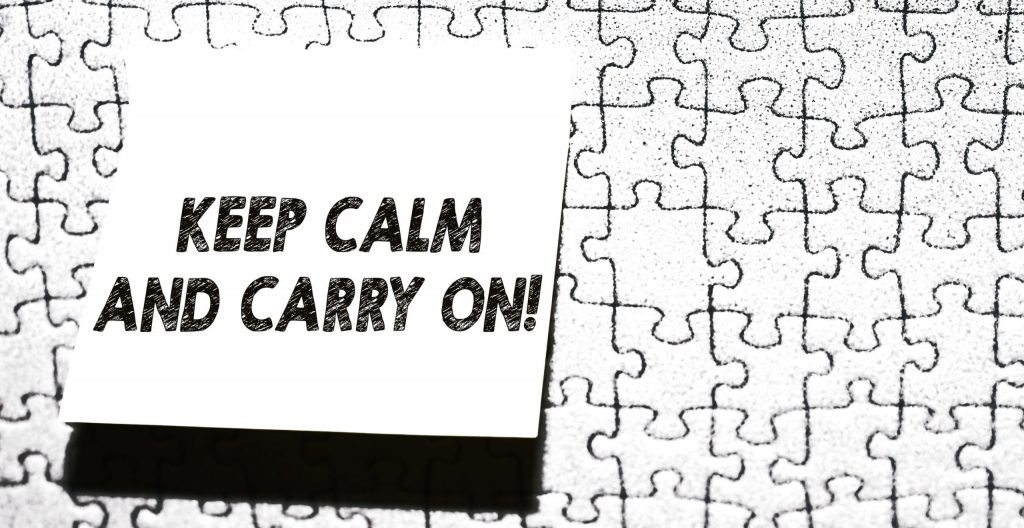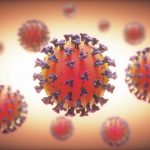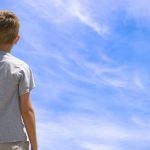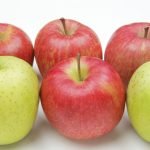DAVID J. SCHLEICH, PHD
There are many aspects of naturopathic medical education which are being reviewed, repurposed, and reorganized right now. In the flurry of change and activity, thought leaders from outside our own community can sometimes provide useful and relevant insights for the path ahead. For example, take Dingeman Kuilman, the Dutch design and fashion thinker who led Premsela for many years (the Dutch platform for design and fashion focusing on the need for synergy in societal, cultural, and economic sectors in the design field). Kuilman’s ideas and track record resonate with what the naturopathic profession is dealing with. He is famous for his entreaty to Dutch artists to not forget their roots, most particularly the foundations of beauty in art. A skilled leader, he has often taken the least common denominators of our daily experience and converted them into enduring wisdom and practical purpose.
This grand skill shows up not only in his own work, but also manifests in strategies to balance the worrying trend at one point to put aside cultural concerns and focus instead on economic issues affecting art, forgoing the roots of artists’ work more often than not. When I first learned of his work, I was put in mind of how difficult it has been for the naturopathic profession to hold on to its principles in action, in the face of the hegemony of biomedicine and its dominance in public policy and civil authority. The juggernaut of the biomedicine and pharmaceutical industries is itself being scrutinized for its track record and burden on the nation’s economy. Kuilman’s admonition that those who want instant success can only achieve it by copying something else (Kennedy, 2010) is a key ingredient in the debate among emerging naturopathic professionals about their place in civil society, especially so in a post-Covid era.
Especially telling is Kuilman’s advice to revisit the roots of art to help find the way forward. For example, citing Goethe and talking about the endless diversity of color available to us, he suggests that we sooner feel than understand its joy. In this regard, students queuing to begin their naturopathic programs are trending the inverse. They want to understand what to do about all that is occurring so stridently in front of their cohort right now. They already feel, as do their teachers, so much beating down on us all, like unrelenting sunlight. The experience makes us all hugely curious.
We ought not to stare too long at the source of all that streaming and indiscriminate energy, or we risk hurting our ability to see at all. As we have been cautioned all our lives, staring at the sun can cause serious solar retinopathy. Kuilman’s counsel is that we’re best not to fix our gaze too long on the unrelenting barrage, because such excessive looking can blind us. We’re best to assume the continuity of source, keep calm, and carry on, adjusting our gaze to the ground before us.
Echos of Jericho
So, here we are, trying to keep our wits intact in a spinning world, intensity in our eyes, our breathing screened by N95 masks. We stare in mingled disbelief and curiosity at the compounding threats that threaten to overwhelm us. In the world of naturopathic medical education, we see a familiar landscape cratered by the triple whammy of declining niche enrollment, declining revenue, and persistent ambiguity about our place in healthcare design and delivery. Back at our schools, the ground before us is shifting and drifting. How we are going to deliver curriculum to those who have found their way to us despite everything is a top priority. The walls protecting what we have built with such passion and care for so long are at risk of tumbling down. We feel this; we want to understand how it all has happened.
A scan of the health education terrain, specifically first professional degrees in medicine, reveals the well-known organizing ground for medical education: 129 biomedicine medical schools and growing, 2-3 applicants for each of the 15K-16K seats available. Seven naturopathic medical schools, not growing, fewer than 1.5 applicants for each of the 500 seats available. The students and their professors in each continuum are busy right now aligning their lives for September 2020, contemplating a system that debates such fundamentals as “just-in-case learning vs just-in-time learning” or “adaptive curriculum vs traditional curriculum.” The work nearest is to make sense of what to do next while gearing up in the face of so many unknowns. With apologies to John Mellencamp, The Inspirations, and The Style Council, may I revert to my habit of mixing metaphors and stories to make sense of this onslaught of blinding change?
We all know that in some fashion, after its long historical run, the walls came tumbling down in legendary Jericho eons ago. The jury is out on why that happened. What is known, though, is that those protective walls never went up again. In medical education and the professional formation of healthcare providers, walls that went up as a result of the Flexner Report (1910) have prevailed for decades in diverting massive funding and social closure in favor of conventional allopathic medicine; but they too are under siege. Today, as we cocoon, quarantine, and mask up, the gates of even that allopathic city, long unassailable, now face being invaded and overrun, the elements of the siege accelerated by the Covid pandemic, rather than caused by it. What has been dividing professional health disciplines comes into sharp relief in such a milieu, especially the current cascade of change in higher education and the impending evaluation of how our current model of health services performed.
Alcmaeon’s School of Croton
To make sense of that cascade, let’s begin at the beginning. Some say that formal medical education, embedded in early studies of philosophy and science, started in Alcmaeon’s School of Croton in southern Italy, in the 5th century BC. (Fulton, 1953). From the tiny body of literature that has survived from that era, we still benefit from the notion that there is a “coincidence between medical terms and political terms” (Santacroce et al, 2019). Essentially, Alcmaeon posits that without balance among opposing groups (or forces in the body, when thinking medically), imbalance (in the body, or in society) is the outcome. He reminds us in the same breath that although equilibrium is desirable for the health of systems, it is always “momentary [and] not indefinite.”
The ancients would insist that this principle applies to all forces afoot, even those focused on change. In our day, consider globalization, outcomes orientation in education, cost-awareness in the delivery of products and services, target-driven environments, and short-termist cost-cutting agendas. There are, too, the barriers among health professions, the oscillating schism between classrooms and clinical settings and care, the danger of thinning CPD (continuing professional development), and the loud voice of the state over those of educational and health leaders. Imbalance abounds.
Still they come, a new generation of students seeking education and training for a new generation of patients. They line up to begin the protracted 10-year march after high school through pre-medicine, and on to the ND (or MD/DO/NP) degree. They don’t stop there. Then comes specialty training followed by establishing a clinic or being an employee in clinical, research, and health services environments. There is also the bulbous long-term debt in each graduate’s backpack which adds to the contemporary burden and, along with everything else, gives the current cohort pause.
Thus the headlong think-tank ambience of higher education, in which job #1 is changing how to structure medical education so that it takes less time and confronts the exponential torrent of new content in a reduced delivery environment. On the sidelines, there are those who insist that we risk even more professional fragmentation as we course along.
Student and Teacher Voices
Student and teacher voices accumulate. In a recent cross-country 20-person survey of students and teachers, I assembled a sampling of the questions they are posing at the end of one of the most disrupted academic years in living memory:
- Why don’t we set things up so we can develop skills at our own pace, in a continuum which is customized and available less expensively? With the caveat that outcomes assessment will determine skill and quality, there is technology all around that can make such a brave new world of just-in-time learning available and successful.
- Why is the naturopathic medical curriculum so state- and regionally specific? Can we not be more like, say, the international MBA crowd who provide learning experiences which transcend borders and embrace other points of view and techniques for healing?
- Why cannot Accreditation Agencies, whose mandate is to assure quality outcomes, pay more attention in their assessment measures to getting health professional feet on the ground rather than on the detail of day-to-day programming activity with all the attendant quotas and numbers?
Perhaps the only way out is right on through. Naturopathic medicine has had in play a taxonomy of building blocks for medical school training that has long included the following (Williams, 2016):
- basic medical sciences
- the principles of naturopathic medicine
- clinical problem-solving including naturopathic modalities
- learning how to acquire knowledge
- patient-centered healing practice
- teamwork and inter-professional collaboration
- technology training
- clinical research
The AANMC (Association of Accredited Naturopathic Medical Colleges) has been active in the past year, providing a framework and launch pad for whatever we devise in the brave new world of post-Covid medical education, whether it’s a model of case-based learning in small groups with laptops, tablets, and iPhone in hand, or something more traditional. But there’s more.
So as not to lose what has been so valuable in the past, there is the epistemology of learning to consider as we trim, scale, modify, and align. We don’t want the walls to come tumbling down without new and better ones to shelter us. We know that it’s about the content of the knowledge delivered, but we also know that how that knowledge is acquired is the work nearest. In an area when the sage on the stage is often virtual and the guide on the side is 6 feet away at the best of times, the process shifts and drifts. It boils down to the critical distinctions – in theories of learning, at least – between “knowing that” (an idea, concept, fact), “knowing how” (getting a process), and the more subtle “acquaintance-knowledge” notion (that is, knowing by relation). There are also testing, validation, and outcomes assessment in the same recipe.
Thus, as we marshal our resources and wits to create new learning spaces (virtual and time-place bound), we need to keep in mind a natural order of learning and thinking, the elements of which include theoretical learning (a lot of content), manipulative learning (a lot of experiential thinking and practice), affective learning (emotional thinking), and organizational learning (systems thinking). That’s a very tall order for keeping going and staying calm in the doing.
References:
Fulton, J. F. (1953). History of medical education. Br Med J, 2 (4834), 457-461.
Kennedy, G. Dingeman Kuilman Moves On. September 9, 2010. Design.nl. Available at: http://www.design.nl/item/dingeman_kuilman_moves_on. Accessed September 29, 2015.
Liaison Committee on Medical Education. March 2020. Functions and Structure of a Medical School. Available at: https://lcme.org/publications/. Accessed May 11, 2020.
Santacroce, S., Charitos, I. A., Topi, S., & Bottalico, L. (2019). The Alcmaeon’s School of Croton: Philosophy and Science. Open Access Maced J Medi Sci, 7 (3), 500-503.
Williams, D. E. (2016). The Future of Medical Education: Flipping the Classroom and Education Technology. Ochsner J, 16 (1), 14‐15.
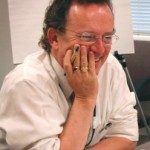
David J. Schleich, PhD, is President Emeritus of the National University of Natural Medicine (NUNM), where he served from 2007 to 2019; former president of Truestar Health; and former CEO and president of CCNM (1996 to 2003). Previous posts have included appointments as vice president academic of Niagara College, and administrative and teaching positions at St Lawrence College, Swinburne University (Australia) and the University of Alberta. His academic credentials have been earned from the University of Western Ontario (BA), the University of Alberta (MA), Queen’s University (BEd), and the University of Toronto (PhD).

